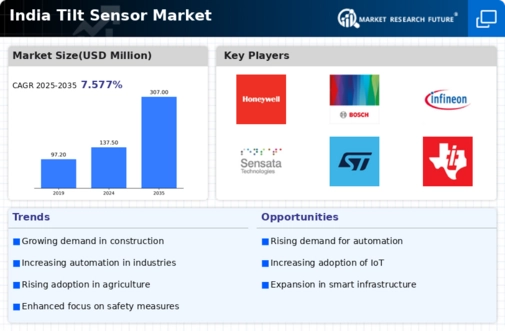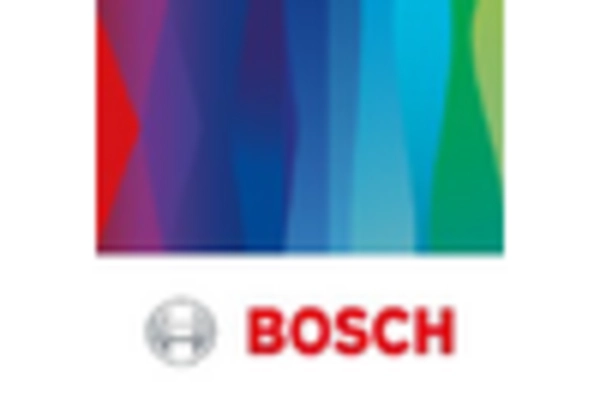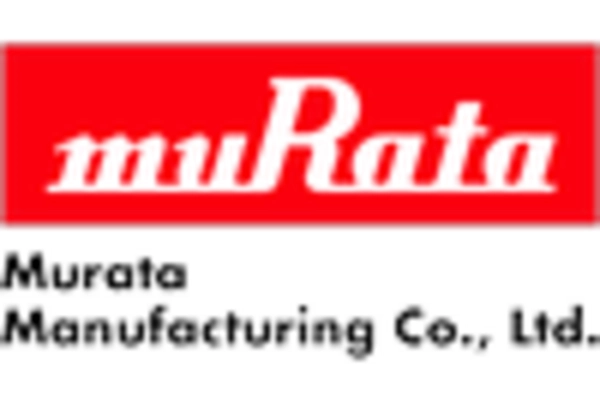Focus on Safety Regulations
The tilt sensor market in India is increasingly driven by stringent safety regulations across various industries. As safety standards evolve, companies are compelled to adopt advanced technologies to comply with regulatory requirements. Tilt sensors are critical in applications such as construction, manufacturing, and transportation, where monitoring tilt angles can prevent accidents and ensure operational safety. The Indian government has been proactive in implementing safety regulations, particularly in sectors like construction and transportation. This regulatory environment is likely to propel the tilt sensor market, as businesses invest in technologies that enhance safety and mitigate risks.
Emergence of Smart Agriculture
The tilt sensor market in India is expected to benefit from the emergence of smart agriculture practices. As farmers seek to optimize crop yields and resource management, the integration of technology in agriculture becomes essential. Tilt sensors can assist in monitoring soil conditions, irrigation systems, and equipment positioning, thereby enhancing agricultural efficiency. The Indian agricultural technology market is expected to reach $24 billion by 2025, reflecting a growing trend towards precision farming. This shift suggests that the tilt sensor market will play a vital role in supporting sustainable agricultural practices and improving productivity in the sector.
Increased Adoption in Robotics
The tilt sensor market in India is poised for growth due to the rising adoption of robotics across various industries. As automation becomes more prevalent, the need for precise orientation and positioning in robotic applications is critical. Tilt sensors provide essential feedback for robotic systems, enabling them to operate efficiently in dynamic environments. The Indian robotics market is projected to grow at a CAGR of around 20% from 2021 to 2026, driven by sectors such as manufacturing, healthcare, and logistics. This growth indicates a promising future for the tilt sensor market, as robotics increasingly relies on advanced sensing technologies to enhance operational capabilities.
Growth in Automotive Applications
The tilt sensor market in India is significantly influenced by the automotive sector, which is undergoing rapid transformation. With the rise of electric vehicles (EVs) and advanced driver-assistance systems (ADAS), the demand for tilt sensors is expected to increase. These sensors play a crucial role in vehicle stability control, rollover detection, and navigation systems. The Indian automotive industry is anticipated to reach a market size of $300 billion by 2026, with a substantial portion allocated to innovative technologies. This trend suggests that the tilt sensor market will likely expand as manufacturers seek to enhance vehicle safety and performance through advanced sensor technologies.
Rising Demand in Construction Sector
The tilt sensor market in India is experiencing significant growth due to the increasing demand from the construction sector. As urbanization accelerates, the need for advanced construction techniques and equipment becomes paramount. Tilt sensors are integral in ensuring the stability and safety of structures, particularly in high-rise buildings and bridges. The construction industry in India is projected to grow at a CAGR of approximately 7.1% from 2021 to 2026, which directly influences the tilt sensor market. This growth is driven by government initiatives aimed at infrastructure development, including smart city projects. Consequently, the tilt sensor market is likely to benefit from the heightened focus on safety and precision in construction practices.
















Leave a Comment